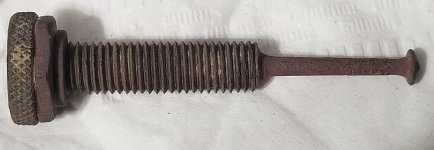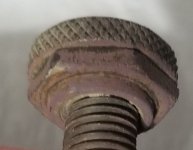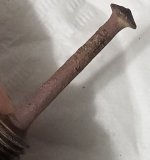invent4hir
Bronze Member
- Aug 1, 2017
- 1,785
- 2,733
- 🏆 Honorable Mentions:
- 3
- Detector(s) used
- Whites V3i & DFX
- Primary Interest:
- All Treasure Hunting
This brass artifact that measures 2 1/4" long was found not far from where I believe a 19th century one-room school house once stood, and where a LC and a Lincoln Logs RR Engineer figure were found. The fine threads, grooves in the knob to help fingers grip better, and tip on the opposite end made me think it is part of a needle valve. All IDs welcome.









